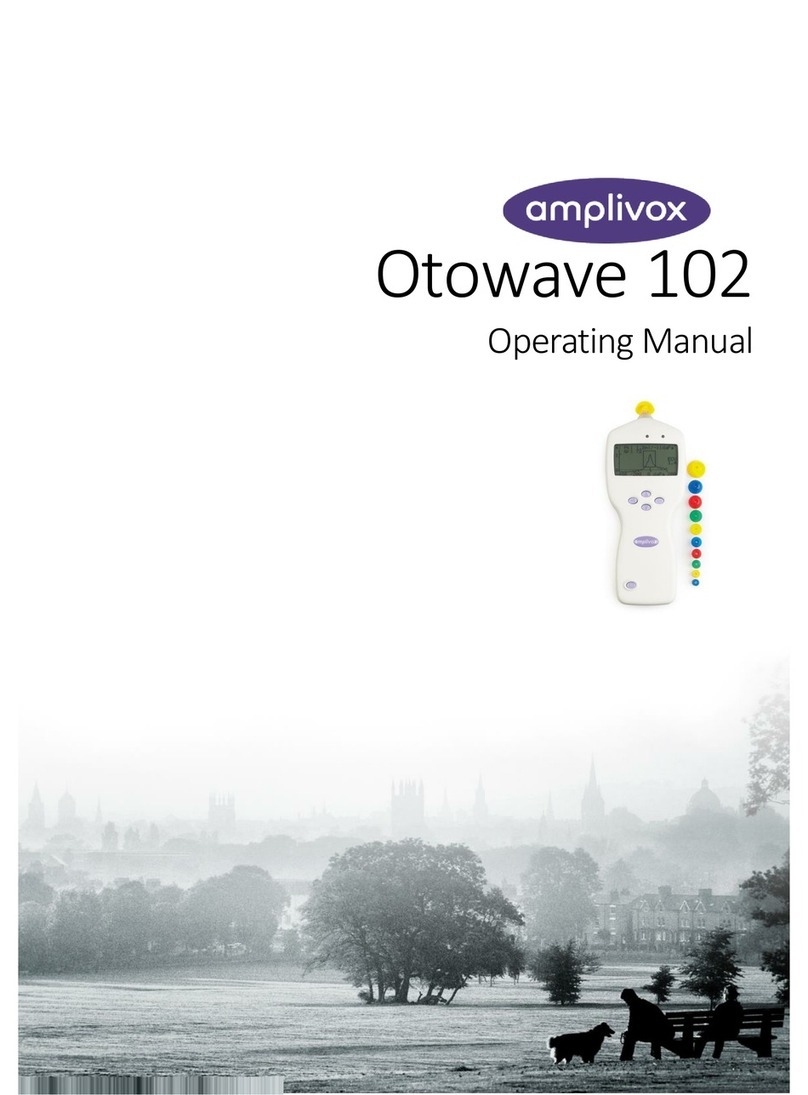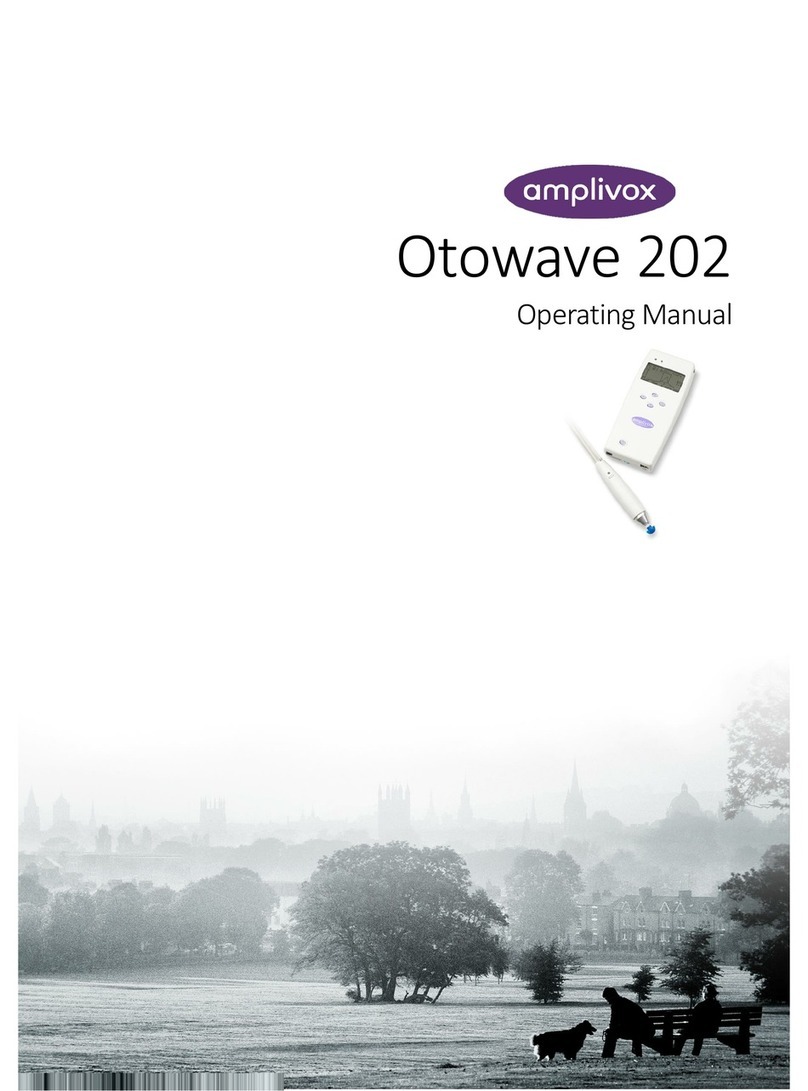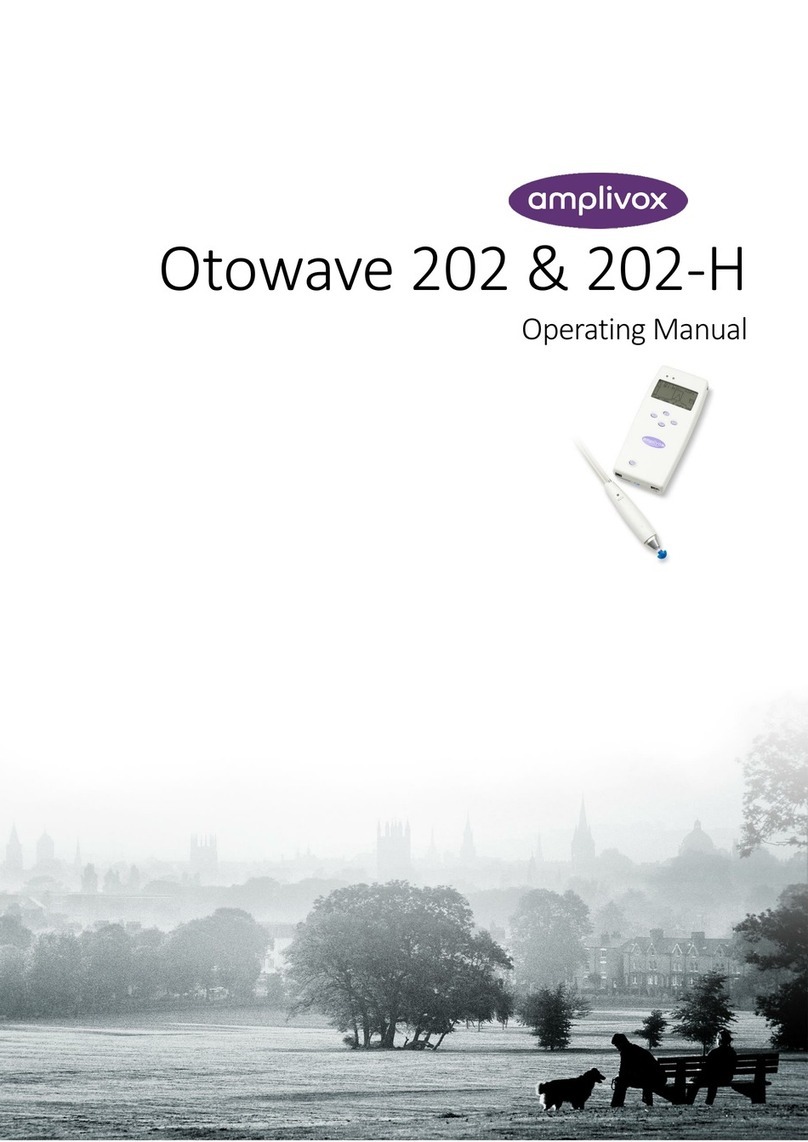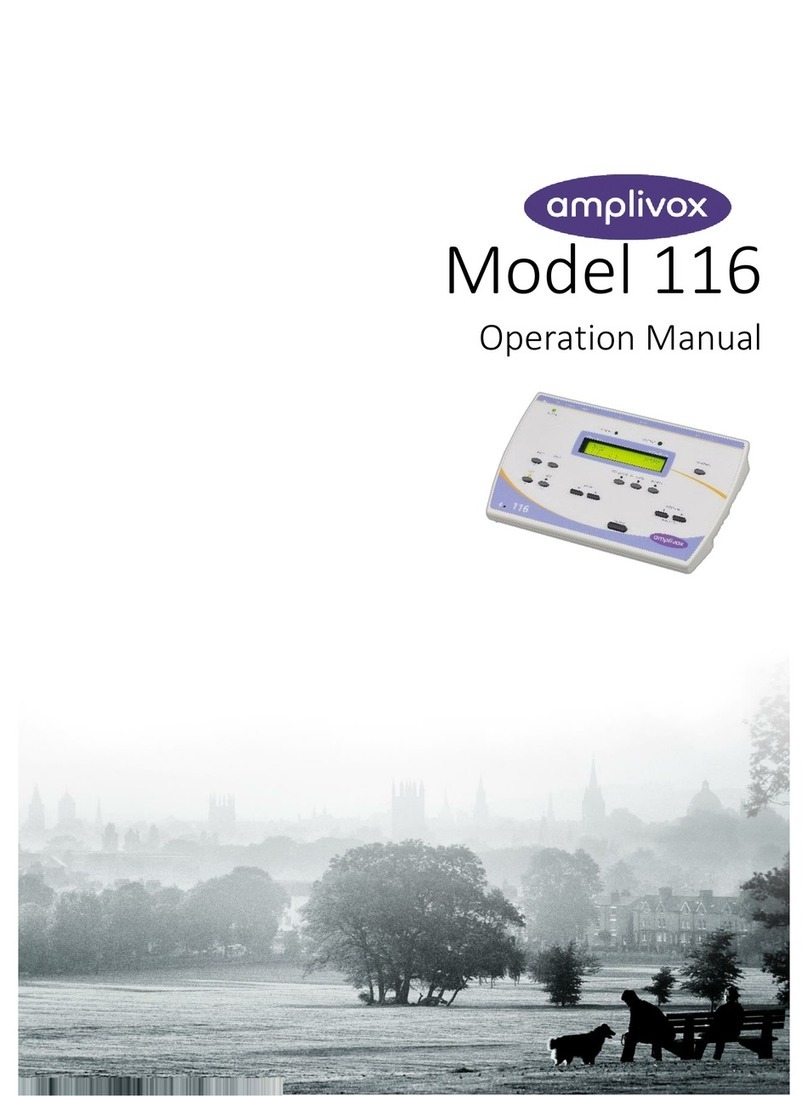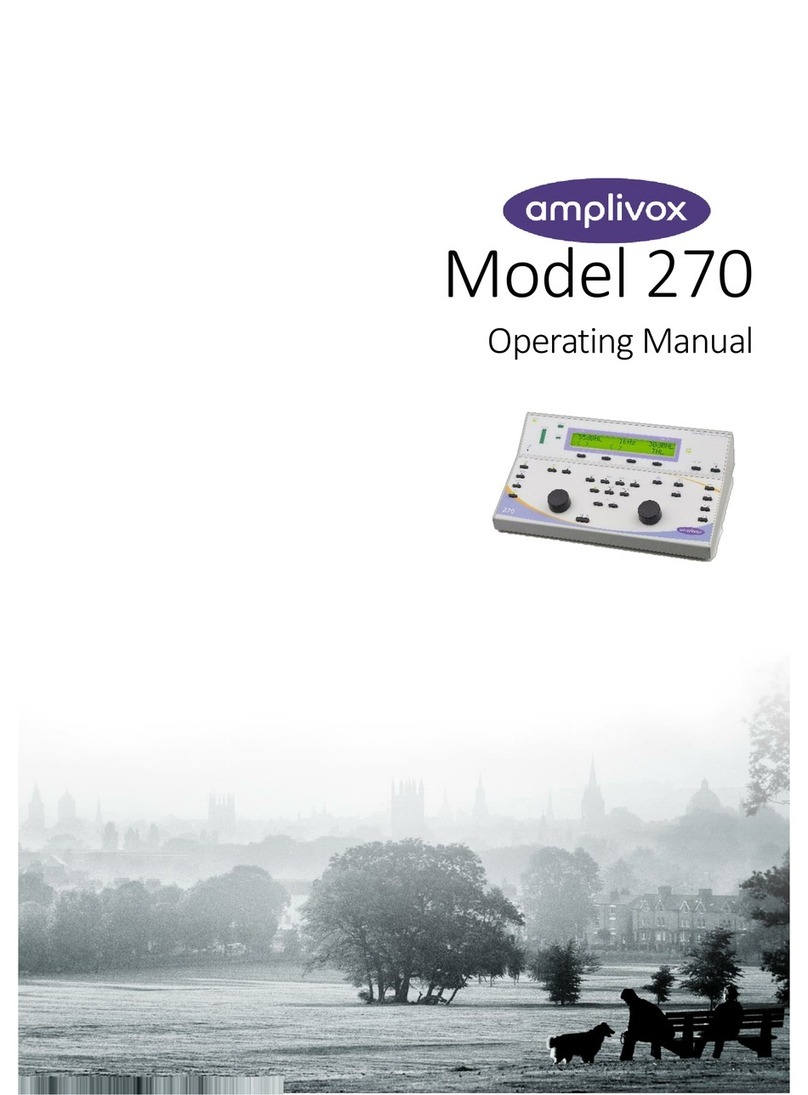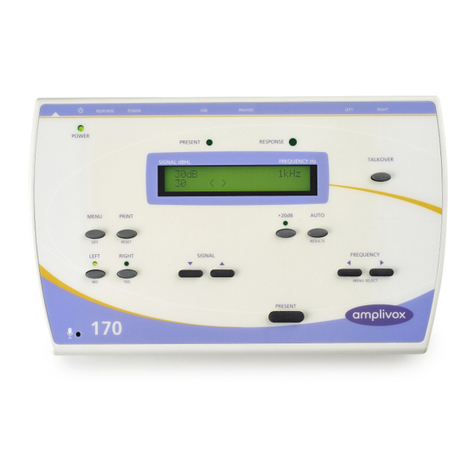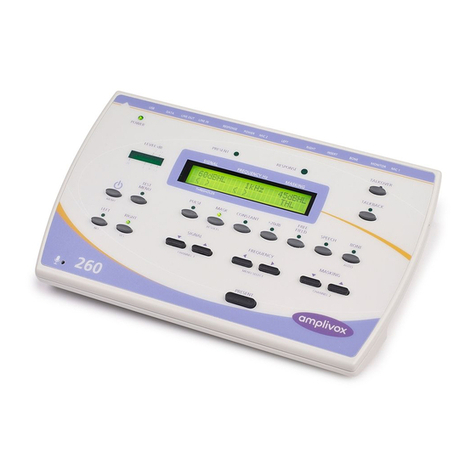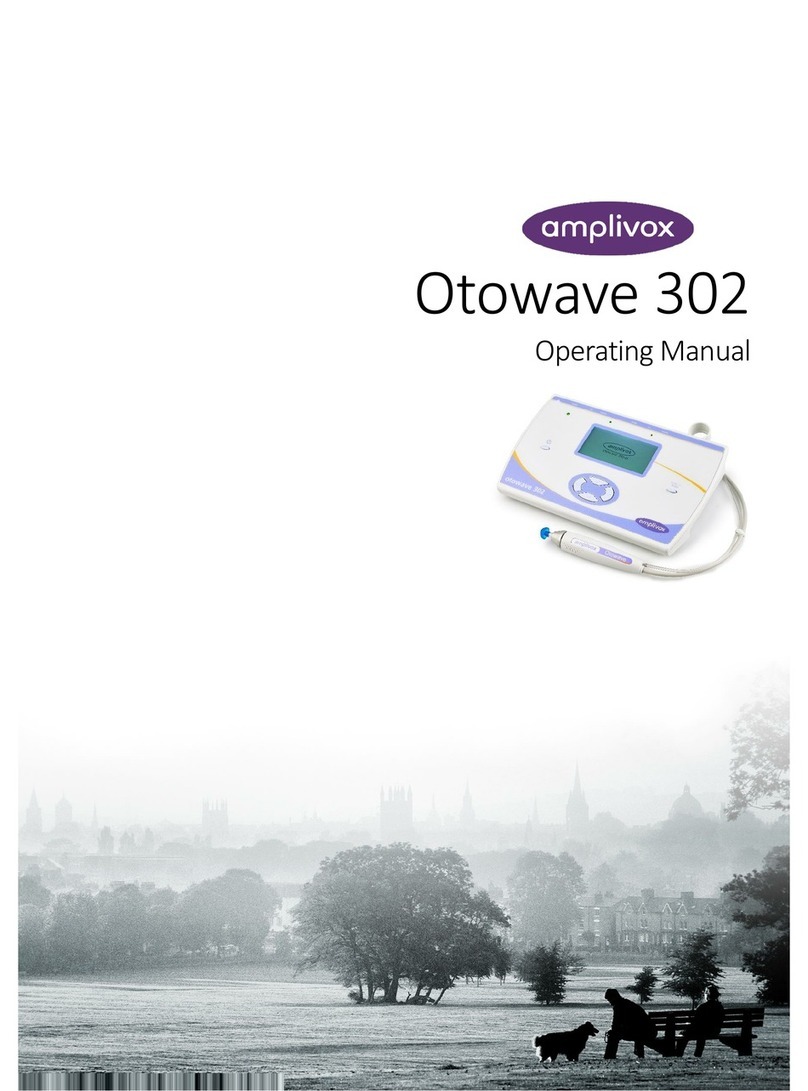iii
D-0116493-B (OM015) –PC850 Operating Manual
5.1. GENERAL ............................................................................................................................................................22
5.2. SWITCHING THE AUDIOMETER ON AND OFF .............................................................................................................. 22
5.3. AUDIOMETER DISPLAY...........................................................................................................................................22
5.4. AUDIOMETER CONTROLS........................................................................................................................................22
5.4.1. Multifunction Keys.................................................................................................................................. 22
5.4.2. MENU ..................................................................................................................................................... 22
5.4.3. Description of Function of Other Keys .................................................................................................... 23
5.5. THRESHOLD RETENTION FUNCTION..........................................................................................................................23
5.6. SAVING AUDIOGRAMS IN INTERNAL MEMORY.............................................................................................................24
5.7. LOADING AUDIOGRAMS FROM INTERNAL MEMORY......................................................................................................24
5.8. DATA TRANSFER TO AMPLIVOX AUDIBASE .................................................................................................................24
5.9. SUGGESTED SEQUENCE OF OPERATION AND TEST PROCEDURE......................................................................................24
5.9.1. Pre-test ................................................................................................................................................... 24
5.9.2. Familiarisation........................................................................................................................................ 24
5.9.3. Test ......................................................................................................................................................... 25
5.9.4. Post-test.................................................................................................................................................. 25
6. OPTIONS AVAILABLE TO SET-UP........................................................................................................................26
6.1. GENERAL ............................................................................................................................................................26
7. TROUBLESHOOTING ..........................................................................................................................................27
7.1. NO INSTRUMENT CONNECTED ................................................................................................................................ 27
7.2. WRONG PASSWORD .............................................................................................................................................27
7.3. NO RESPONSE FROM PATIENT ................................................................................................................................ 27
7.4. CONTINUAL RESPONSE FROM PATIENT .....................................................................................................................28
7.5. NO RESULTS........................................................................................................................................................28
7.6. ERRORS IN TEST SEQUENCE .................................................................................................................................... 28
7.7. INCONSISTENCY IN 1KHZ REPEAT TEST ..................................................................................................................... 29
7.8. USB LEAD DISCONNECTED.....................................................................................................................................29
7.9. ACCIDENTAL CLOSURE OF PC850 PROGRAM.............................................................................................................30
8. ROUTINE MAINTENANCE...................................................................................................................................31
8.1. GENERAL MAINTENANCE PROCEDURES ....................................................................................................................31
8.2. AUDIOMETER MAINTENANCE..................................................................................................................................31
8.3. HEADSET MAINTENANCE ....................................................................................................................................... 32
8.4. ACCESSORIES/REPLACEMENT PARTS .........................................................................................................................32
8.5. REPAIR...............................................................................................................................................................32
8.6. WARRANTY.........................................................................................................................................................33
8.7. CALIBRATION AND RETURN OF THE INSTRUMENT........................................................................................................33
8.8. GUARANTEE........................................................................................................................................................ 33
9. TECHNICAL SPECIFICATIONS..............................................................................................................................35
9.1. STANDARDS AND REGULATORY................................................................................................................................ 35
9.2. INPUT/OUTPUT DATA........................................................................................................................................... 35
9.3. PHYSICAL DATA ...................................................................................................................................................35
9.4. EARPHONE SOUND ATTENUATION CHARACTERISTICS ..................................................................................................36
9.5. ENVIRONMENTAL .................................................................................................................................................36
10. EMC GUIDANCE & MANUFACTURER’S DECLARATION...................................................................................37
11. USE WITH NON-MEDICAL ELECTRICAL EQUIPMENT ......................................................................................42

